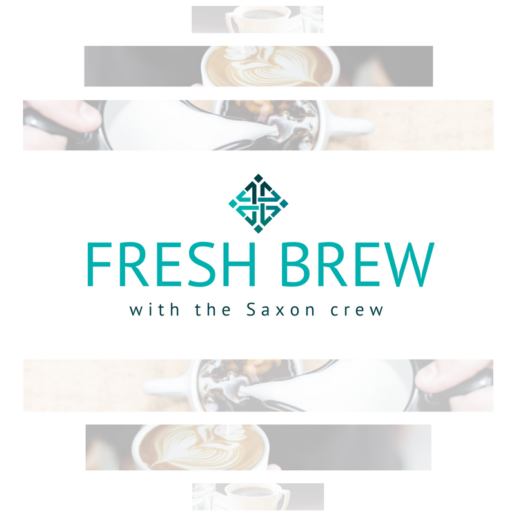5 reasons to offer a student loan repayment benefit in 2019
Are you looking for ways to help add more value to your talent through your 2019 benefits packages? Continue reading to learn why you should offer student loan repayment as one of your employee benefits.
With human resources managers across the country working to finalize their 2019 benefits packages this month, many are asking themselves: How can we add more value for our talent and help the company grow? For many employers, the answer is helping employees manage their student loan debt.
Over the years, student loan debt has reached an astronomical sum. As of 2008, college tuition fees rose by 439% from 1982. And by the first quarter of 2018, 44 million Americans owed a total of $1.5 trillion in student loan debt, exceeding both credit card debt and auto loan debt, according to the Federal Reserve. Not only is this an extreme amount of debt, but has also taken an enormous emotional toll, with more than half of college-educated adults (54%) surveyed by Laurel Road in 2018 feeling that they will never make enough money to reach their financial goals.
Fast forward to today, and borrowers are seeking creative ways to tackle their debt and save more. Recently, in a private ruling, the IRS granted Abbott Laboratories, a national healthcare company, the option to contribute to employee 401(k) plans based on the employee’s student loan payments. Other companies — from corporate behemoths to busy startups — have partnered with student loan refinancing companies to offer employees refinancing options that can help them save, often at no cost to the company.
With Americans quitting their jobs at the fastest rate since 2001, keeping employees happy is imperative. And part of keeping millennials happy is to provide practical benefits, not just the fun perks. Employees are looking to foster meaningful relationships with their employers — so looping in student loan repayment benefits can pay off for both the employer and the employee.
So what’s to gain? Here are some of the top reasons employers should consider incorporating student loan repayment benefits into their 2019 benefits package.
1. Recruit, retain and stand out
2. It’s flexible and free
3. Eliminate the student loan vs. retirement conflict
4. Help employees save
One of the reasons why the student loan benefit is attractive for employees is the significant savings it can lead to. If refinancing is an option, employees have the potential to save thousands of dollars over the life of their loan through a lower loan interest rate and lower monthly payments.
In the long run, the cumulative savings can add up to several thousand dollars or more. Employers should keep in mind that the savings amount will change depending on the financing company you choose to work with. Many can offer employer customers exclusive rates, which leads to even greater savings.
5. Boost morale and productivity
According to another benefits company, 31% of employees surveyed say their money concerns affect their work. Meanwhile, 74% of people feel stress daily about their student loan debt and spend time at work thinking about it, impacting their overall productivity in the workplace. So in addition to the hard savings employees are earning through these programs, they are also rewarded with the soft benefits of reduced stress and anxiety at work.
With student loan debt reaching record highs in recent years, employers have recognized that there’s a crucial need to provide employees with options to help them pay down their student loan debt. And when options like refinancing come at no cost to them, this benefit will likely become more popular. In the future, we can expect more employers to pave the way for student loan repayment programs. Will you be one of the trailblazers?
Unleash voluntary benefits to attract millennials
Does your company know how to recruit the younger generations? Employers can use voluntary benefits to help attract millennials. Continue reading to learn more.
A war for talent is being waged. Boomers are retiring and seeking new challenges and now is the time to woo the millennials. Just how do you attract the right millennials for your company? Like most organizations, you probably offer a total rewards package that includes competitive compensation and core benefits, like medical, dental, life, disability and a 401(k) plan.
See also: One sure-fire way to engage employees in voluntary benefits
What about those ancillary benefits you hear about in the marketplace? While a ping pong table in the break room may entice some, many millennials seek help for specific needs from their potential employer. Voluntary benefit products can be the missing puzzle piece in your total benefits package and can help younger candidates feel confident that your benefit plan is tailored to them.
Millennials want real choice, access and ease of use. In this Amazon Prime world we live in, it’s important that enrolling in benefits and paying for them are as easy as possible. Exceptional communications, smart enrollment options and ease of payment are key to success.
Here are some voluntary benefit options to consider:
Accident & hospital indemnity insurance programs
While critical illness insurance may not appeal to a millennial, certain worksite benefits are beneficial. These benefits help employees pay for unexpected out-of-pocket medical costs, as well as cover the financial gaps of traditional coverage like deductibles and coinsurance. Worksite benefits pay cash to the individual, allowing the participant the flexibility to use the funds however she or he sees fit — for rent, car payments, living expenses or out-of-pocket medical expenses. Accident Insurance generally pays a cash reimbursement based on an injury benefit schedule. So, if the employee has a bicycle or paddleboard accident and breaks a leg, cash payments will be made for the type of injury and treatment. A similar type of benefit is Hospital Indemnity Insurance that pays a lump sum for an initial hospital admission and then a per diem benefit. The best part is the cost of these benefits is relatively inexpensive — like paying for a few cappuccinos a month.
See also: 3 Ways to Reshape How You Communicate About Benefits with Millennials
Student loan refinancing programs
Millennials are feeling the brunt of their student loans. One in four millennials owe more than $30,000 in college debt and think that it will take more than 20 years to pay them off, according to an ORC International Survey. Student loan stress is making millennials feel less financially secure than their older work colleagues. This can have an adverse effect on any type of savings plans an employer offers such as a 401(k). More employers are considering programs that can help employees manage their student loan debt. There are typically three ways to look at these programs:
- Refinancing options: There are many lenders that work specifically with student debt and will refinance and consolidate existing student loans and may offer a special incentive if this is done through their employer. Keep in mind, if an employee has a federally-backed student loan, refinancing may not be the best solution.
- Debt management resources: Many lenders that provide refinancing options have educational tools and resources to assist employees in managing their debt.
- Employer contribution: Of course, this would not necessarily be a voluntary benefit-only program, but employers are looking into helping their employees pay their loans back through employer-sponsored match programs.
Employee purchase programs
Millennials’ student loans may prevent them from making certain necessary purchases. Employee Purchase Programs offered through employers can help workers pay for items they may need immediately, like a washer and dryer replacement over a period of time. Like other voluntary benefits, this one comes with the added convenience of payroll deduction and repayment, helping millennials feel more empowered to make these more expensive purchases and build their credit.
Auto & Homeowners Insurance and legal insurance
Group auto and homeowners’ insurance offered through an employer can provide discounts based on tenure and payroll deductions that are not available in the individual market. Group legal insurance may be attractive to millennials who need to create a will for the first time or buy a new house. Most services are covered and family members are also sometimes eligible to be part of the plan.
See also: 15 employee benefits on the rise
In a time when cost-saving initiatives may be pinching employer-sponsored health plans, voluntary benefits may help cover gaps left by high deductible plans and provide value to employees without adding cost to the bottom line. With diverse offers, easy enrollment, low premiums and payroll deductions, voluntary benefits are worth considering and should be an integral part of your attraction and retention program for millennials.
SOURCE: Marcia, P. (17 September 2018) "Unleash voluntary benefits to attract millennials" (Web Blog Post). Retrieved from https://www.employeebenefitadviser.com/opinion/unleash-voluntary-benefits-to-attract-millennials
Fresh Brew with Jamie Charlton
Welcome to our brand new segment, Fresh Brew, where we will be exploring the delicious coffees, teas, and snacks of some of our employees! You can look forward to our Fresh Brew blog post on the first Friday of every month.
“Our vision at Saxon is ‘To care so much about you, that you don’t have to worry about your future.’ This epitomizes my position at Saxon because I not only apply this vision to our clients but also our staff.
It takes both our clients and staff to make Saxon what it is today and will be in the future, and so, I embrace each day with the attitude of making sure our clients and our staff know how much we care for them; allowing them the assurance that their future is in good hands.”
Jamie Charlton is the founding partner and CEO of Saxon Financial Services. Jamie has been in the Financial Services field since graduating from the University of Michigan in 1998 and earned his Certified Financial Planner designation in 2003. He sits on the Board of the Sharonville Chamber of Commerce and enjoys spending time with his family and being outdoors with his time away from the office.

Favorite Brew
Rhiengeist Truth
Jamie loves grabbing his favorite brew at The Silver Spring House in Cincinnati.
View their menu.
Favorite Snack
Smoked Salmon with Dill Sauce
Jamie enjoys getting the smoked salmon with dill sauce from the Seafood Station.
5 ways benefits educators can ease the open enrollment process
Are you prepared for open enrollment? HR professionals are responsible for effectively communicating plan options and changes to employees so they make informed decisions regarding their coverage and healthcare. Continue reading to learn more.
Open enrollment season is on its way, which means that HR’s already full plate just got a bit fuller. In addition to developing competitive health plans that attract and retain top talent – talent of all ages and with varying needs – HR pros are also responsible for effectively communicating plan options to employees to ensure that individuals make informed, cost-conscious decisions about their coverage and care.
See also: Here’s how HR pros can breeze through open enrollment
As the healthcare landscape becomes more complex, so do employee questions around their health care benefits. Many healthcare consumers today don’t feel comfortable navigating the health care system – which is why most roll over the same plan year after year. While HR teams want to manage the influx of employee questions around their benefits options, they struggle to provide the necessary guidance given their current bandwidth. Covering health plans in a large townhall meeting won’t provide the personalized information that employees need to make educated decisions. To deliver a more personal, empowering experience, organizations can look to benefits educators to supplement strapped HR teams.
Benefits educators can help individuals better understand the plan options available to them and select the package that offers the coverage they need at the price that best fits their budget. To ensure that benefits educators are aligned with the organization’s strategy, HR teams should arrange for educators well in advance of open enrollment so they are equipped to best explain the employer’s benefits plan options. Once up to speed, benefits educators can hold one-on-one conversations with employees to:
1. Define healthcare terms that employees don’t understand. With low healthcare literacy rampant across the U.S., disturbingly few employees are comfortable defining basic health terms such as “deductible,” “copay” or “coinsurance.” benefits educators cannot only explain these important terms but also help employees understand their significance in their coverage selection process.
2. Compare different plans to suit each employee’s needs. Benefits educators will work to understand the specific needs of each employee they meet. By taking the time to sit and get to know each employee, the benefits educator can recommend options that provide the coverage that best meets the needs of the employee and his or her family.
See also: Avoid these 12 Common Open Enrollment Mistakes
Third-party, independent benefits educators can be particularly valuable for employees who do not feel comfortable posing personal questions to their coworkers. By meeting one-on-one with an outsider who understands both benefits in general and company options in particular, employees are often more inclined to raise specific health or personal details that should guide their benefits selection. In fact, 45 percent of employees say they would prefer to speak to a benefits expert when choosing their coverage.
3. Equip employees with the information they need to choose their coverage. Left to their own devices, 83 percent of employees spend less than an hour reviewing their plan options before open enrollment – a lack of preparation that does not bode well for educated benefits selection. benefits educators can focus on the details that matter – saving the employee time and effort.
4. Explain voluntary benefits. Despite the increasing popularity of voluntary benefits, many employees are still confused about what they are, how they work and why they might be helpful. In reality, certain voluntary benefits can help control health costs and bridge the gap between medical coverage and out-of-pocket costs – added expenses that concern 61 percent of employees. In today’s multigenerational workforce – where employees have very different priorities when it comes to their health and financial wellness – benefits educators can dispel some of the mystery and suggest options that might meet individual needs.
5. Empower employees to make the most of their benefits year-round. Benefits educators can lay the groundwork for more educated health care consumers by directing employees to resources where they can find more information about their coverage and how their plans work after the open enrollment ends.
See also: 5 tips to make this the best open enrollment ever
More informed employees not only make smarter choices about their coverage and care but also better appreciate their employers – which has the potential to help with retention and business productivity. Ultimately, organizations see a win-win-win: happier employees who save on care, happier HR teams who save on time and happier executives, who see a significant return on their health care investments.
SOURCE: Murdock, G (21 September 2018) "5 ways benefits educators can ease the open enrollment process" (Web Blog Post). Retrieved from https://www.benefitspro.com/2018/09/21/5-ways-benefits-educators-can-ease-the-open-enroll/
How employers can support employees during cancer treatment
Many people with cancer are choosing to continue working during their treatment. Read this blog post to learn how employers can support their employees during their cancer treatment.
Thanks to more sensitive diagnostic testing, earlier diagnosis and new treatments, the number of cancer survivors in the U.S. has grown to 15.5 million, and that number is projected to increase to 20.3 million by 2026. In addition, about 1.7 million Americans are projected to be diagnosed with cancer this year. A large percentage of these cancer patients and survivors are still active members of the workforce and the numbers have the potential to increase even more as people remain in the workforce beyond age 65.
Some people with cancer choose to continue working during treatment. Reasons for continuing to work can be psychological as well as financial. For some, their job or career is a big part of the foundation of their identity. A survey conducted by the non-profit Cancer and Careers found that 48% of those surveyed said they continued to work during treatment because they wanted to keep their lives as normal as possible, and 38% said they worked so that they felt productive. Being in the workforce also provides a connection to a supportive social system for many people and boosts their self-esteem and quality of life.
See also:
There also are financial benefits to the employer when employees continue to work during cancer treatment. Turnover costs, including hiring temporary employees and training replacement employees, are high. The cost of turnover for employees who earn $50,000 per year or less (which is approximately 75% of U.S. workers) average 20% of salary. For senior and executive level employees, that cost can reach 213% of salary. In addition, it can be costly to lose the experience, expertise, contacts and customer relationships employees have built.
This raises the question for employers: How can I support employees who choose to work while undergoing cancer treatment? Providing that support can be complex as employers work to balance their legal responsibilities under the Americans with Disabilities and Family and Medical Leave Acts with the privacy requirements of the Health Insurance Portability and Accountability Act (HIPAA).
When an employee chooses to share his or her diagnosis with a supervisor or HR representative, employers should view this disclosure as the beginning of a conversation with the employee taking the lead. (It’s up to the employee what information he or she wants to disclose about the diagnosis and treatment and with whom the information can be shared within the organization.) Here are four ways employers can support employees who are getting cancer treatment.
Help employees understand what benefits are available
The first step an employer should take is to refer the employee to the organization’s human resources manager (or someone who handles HR matters if the organization is smaller and does not have a human resources department) so that person can share information about all available benefits and pertinent policies. Provide details on:
- Medical and prescription drug coverages, including deductibles, co-pays, precertification requirements, network healthcare providers and plan and lifetime maximums
- Leave policies
- Flexible scheduling and remote work options, if available
- Employee assistance programs
- Community resources and support groups
See also:
Offer professional guidance
Offering patient navigator or case management services can also be beneficial. Navigators and case managers can provide a range of services including:
- Connecting employees with healthcare providers
- Arranging second opinions
- Providing evidence-based information on the type of cancer the employee has been diagnosed with and options for treatments
- Help filing health insurance claims, reviewing medical bills and handling medical paperwork
- Coordinating communication and medical records among members of the treatment team
- Attending appointments with employees
- Answering employee questions about treatments and managing side effects
Make accommodations
Workplace accommodations are another key pillar of support for employees working during cancer treatment. In addition to flexible scheduling, to accommodate medical appointments and help employees manage side effects like fatigue and nausea, and the option of working from home, workplace accommodations can include:
- Temporary assignment to a less physically taxing job
- Substituting video conferencing or online meetings for travel, which can be difficult for employees dealing with fatigue or a suppressed immune system, and can make it hard to attend needed medical appointments
- Leave sharing for employees who have used all their paid time off and can’t afford to take unpaid leave. Some organizations offer leave banks or pools where employees can “deposit” or donate some of their vacation days for employees dealing with a serious illness to use.
See also:
Employees may continue to need accommodations after treatment ends if they face late side effects such as fatigue, difficulty concentrating, numbness caused by nerve damage or heart or lung problems. Continuing job and schedule modifications can help mitigate the situation.
Ask for employee input
An often overlooked part of supporting employees who are working during cancer treatment is asking the employee what types of support he or she needs and prefers. Employees can share any medical restrictions related to their condition, what types of accommodations or equipment will help them do their job, and what schedule changes will allow them to attend needed appointments and recover from treatment. This should be an ongoing conversation because the employee’s needs are likely to change over the course of treatment and recovery.
SOURCE: Varn, M. (21 September 2018) "How employers can support employees during cancer treatment" (Web Blog Post). Retrieved from https://www.benefitnews.com/opinion/how-employers-can-support-employees-during-cancer-treatment?brief=00000152-14a5-d1cc-a5fa-7cff48fe0001
The approaching ACA premium tax moratorium – take 2
In 2010, Congress scheduled the 2014 Affordable Care Act premium tax. Then in 2015 Congress introduced a one-year moratorium on the premium tax that would take place in 2017. This past January, Congress placed another moratorium for the ACA premium tax in 2019. Continue reading to learn more.
In 2010, Congress scheduled the 2014 introduction of the Affordable Care Act premium tax (aka the health insurer fee). Then, via the PACE Act of October 2015, Congress placed a one-year moratorium on this 4% or so premium tax for calendar year 2017. You might recall our ensuing discussion a couple of years ago about how employers sponsoring fully insured medical, dental and/or vision plans could leverage this 2017 moratorium to their advantage.
See also: ACA: 4 things employers should focus on this fall
Meanwhile, did you notice back in January that Congress placed another moratorium on this tax, this time for 2019? To review:
- 2014-2016 – Tax applies
- 2017 – Under moratorium
- 2018 – Tax applies
- 2019 – Under moratorium
- 2020 – Tax scheduled to return
Fortunately, in moratorium years, fully insured medical, dental and vision premiums should be about 4% lower than they would have been otherwise, with these savings passed along proportionately by most employers to their plan participants.
Unfortunately, the budgetary challenge of this on-again-off-again Congressional approach is that when the tax returns, fully insured renewals naturally go up about 4% more than they would have otherwise. For example, an 8% premium increase becomes 12%.
See also: Proposals for Insurance Options That Don’t Comply with ACA Rules: Trade-offs In Cost and Regulation
Another complication occurs as employers annually compare the expected and maximum costs of self-funding their plans versus fully insuring the plans. Because this tax generally does not apply to self-funded plans, in “tax applies” years, any expected savings from self-funding will show about 4% higher than in moratorium years. This math especially complicates the financial comparison of level funding contracts to fully insured contracts (almost all level funding products are self-funded contracts).
With the Jan. 1 fully insured medical, dental and vision renewals beginning to cross our desks, what should employers do?
First, they should review the renewal’s rating methodology page and ensure that this tax was not included in the proposed 2019 premiums. If the rating methodology page was not provided, request it. If this request fails, ask for written confirmation that this tax is not included in your plan’s 2019 premiums.
Second, when comparing 2019 expected and maximum mature self-funded plan costs to 2019 fully insured premiums, extend the analysis to 2020 and project what will happen when this 4% fully insured tax tide returns.
See also: Pre-existing Conditions and Medical Underwriting in the Individual Insurance Market Prior to the ACA
Finally, complicating matters, several states, including Maryland, introduced new or higher state premium taxes for 2019. Ask your benefits consultant if these actions will impact your plans. For Maryland employers sponsoring fully insured plans, for example, the new additional one-year premium tax will essentially cancel out the 2019 ACA premium tax moratorium.
SOURCE: Pace, Z (27 September 2018) "The approaching ACA premium tax moratorium – take 2" (Web Blog Post). Retrieved from https://www.benefitnews.com/opinion/the-approaching-obamacare-premium-tax-moratorium?brief=00000152-14a5-d1cc-a5fa-7cff48fe0001
Senate passes bill to combat opioid epidemic
Recently, the Senate passed a bill to help battle the opioid crisis. This bill is designed to battle opioid and other prescription drug misuse within the United States. Read this blog post to learn more.
Both parties got behind a bill designed to fight the misuse of opioids and other addictive medications, with a sole Republican voting against it as it passed in the Senate.
See also: Employers take steps to address opioid crisis
As reported by the Associated Press, Utah Republican Mike Lee was the sole dissenting voice as the bill was passed 99-1.
According to the reports, the legislation’s reach is broad, with provisions for deeper scrutiny of arriving international mail that could contain illegal drugs; money for the National Institutes of Health research on nonaddictive painkillers; paving the way for pharmaceutical companies to conduct research on alternatives; approval for the Food and Drug Administration to require drug manufacturers to provide opioids and similar drugs in smaller quantities and packages; and provides federal grants for treatment centers, emergency worker training and prevention research.
See also: The days of employers ignoring the opioid crisis are over
It also would push physicians to discuss pain management alternatives with Medicare patients, something that could have an effect on Department of Health and Human Services data indicating that a third of Medicare Part D prescription plan users in 2017 were prescribed opioids.
“I recognize these provisions are just a start, but we are losing 116 lives every day. And we need to save as many as we can—as soon as we can,” Sen. Gary Peters (D., Mich.) told the Senate.
Funding for the provisions of the measure will have to come from separate spending bills, and for the bill to become law, it will have to be reconciled with legislation that passed the House back in June. Despite the high level of tension between Democrats and Republicans at present, according to the Wall Street Journal, “Senate aides are optimistic the measures can be reconciled and passed by the end of the year.” Still, opioid use is definitely a bipartisan issue, hitting red and blue states alike, with preliminary data from the Centers for Disease Control and Prevention indicating that in 2017 U.S. overdose deaths from all drugs set a record and ballooned to more than 72,000.
SOURCE: Satter, M. (18 September 2018) "Senate passes bill to combat opioid epidemic" (Web Blog Post). Retrieved from https://www.benefitspro.com/2018/09/18/senate-passes-bill-to-combat-opioid-epidemic/
30 employee handbook do’s and don’ts from the NLRB
Recently, the National Labor Relations Board (NLRB) released a list of rules to help employers comply with the National Labor Relations Act. Read this blog post to learn more.
To help employers craft handbooks that don’t violate the National Labor Relations Act, the National Labor Relations Board has issued a compilation of rules it has found to be illegal — and rewritten them to illustrate how they can comply with the law.
It was issued as a memorandum by NLRB General Counsel Richard F. Griffin, Jr. to “help employers to review their handbooks and other rules, and conform them, if necessary, to ensure they are lawful.”
Specifically, the memorandum points out employer policies found to violate and conform to Section 7 of the NLRA.
The main area of concern
Section 7 mandates that employees be allowed to participate in “concerted activity” to help improve the terms and conditions of their work.
The NLRB has made it abundantly clear recently that it’s on the lookout for rules that:
- explicitly restrict protected concerted activity, and/or
- could be construed to restrict protected Section 7 activity.
One thing the memorandum makes very clear: extremely subtle variations in language could be the difference between having a legal policy in the NLRB’s eyes and having one that’s viewed as violating the NLRA.
What to say, what not to say
Here are many of the dos and don’ts highlighted by the memorandum, separated by topic:
Rules regarding confidentiality
- Illegal: “Do not discuss ‘customer or employee information’ outside of work, including ‘phone numbers [and] addresses.'” The NLRB said, in addition to the overbroad reference to “employee information,” the blanket ban on discussing employee contact info, without regard for how employees obtain that info, is facially illegal.
- Illegal: “Never publish or disclose [the Employer’s] or another’s confidential or other proprietary information. Never publish or report on conversations that are meant to be private or internal to [the Employer].” The NLRB said a broad reference to “another’s” information, without clarification, would reasonably be interpreted to include other employees’ wages and other terms and conditions of employment.
- Illegal: Prohibiting employees from “[d]isclosing … details about the [Employer].” The NLRB said this is a broad restriction that failed to clarify that it doesn’t restrict Section 7 activity.
- Legal: “No unauthorized disclosure of ‘business “secrets” or other confidential information.'”
- Legal: “Misuse or unauthorized disclosure of confidential information not otherwise available to persons or firms outside [Employer] is cause for disciplinary action, including termination.”
- Legal: “Do not disclose confidential financial data, or other non-public proprietary company information. Do not share confidential information regarding business partners, vendors or customers.”
The NLRB said the last three rules above were legal because: “1) they do not reference information regarding employees or employee terms and conditions of employment, 2) although they use the general term “confidential,” they do not define it in an overbroad manner, and 3) they do not otherwise contain language that would reasonably be construed to prohibit Section 7 communications.”
Rules regarding conduct toward the company and supervisors
- Illegal: “[B]e respectful to the company, other employees, customers, partners, and competitors.”
- Illegal: “Do ‘not make fun of, denigrate, or defame your co-workers, customers, franchisees, suppliers, the Company, or our competitors.'”
- Illegal: “Be respectful of others and the Company.”
- Illegal: “No ‘[d]efamatory, libelous, slanderous or discriminatory comments about [the Company], its customers and/or competitors, its employees or management.'”
The NLRB said the rules above were unlawfully overbroad because: “employees reasonably would construe them to ban protected criticism or protests regarding their supervisors, management, or the employer in general.”
- Illegal: “Disrespectful conduct or insubordination, including, but not limited to, refusing to follow orders from a supervisor or a designated representative.”
- Illegal: “‘Chronic resistance to proper work-related orders or discipline, even though not overt insubordination’ will result in discipline.”
The NLRB said the rules above, while banning “insubordination,” also ban “conduct that does not rise to the level of insubordination, which reasonably would be understood as including protected concerted activity.”
- Illegal: “Refrain from any action that would harm persons or property or cause damage to the Company’s business or reputation.”
- Illegal: “[I]t is important that employees practice caution and discretion when posting content [on social media] that could affect [the Employer’s] business operation or reputation.”
- Illegal: “Do not make ‘[s]tatements “that damage the company or the company’s reputation or that disrupt or damage the company’s business relationships.”‘”
- Illegal: “Never engage in behavior that would undermine the reputation of [the Employer], your peers or yourself.”
The NLRB said the rules above “were unlawfully overbroad because they reasonably would be read to require employees to refrain from criticizing the employer in public.
- Legal: “No ‘rudeness or unprofessional behavior toward a customer, or anyone in contact with’ the company.”
- Legal: “Employees will not be discourteous or disrespectful to a customer or any member of the public while in the course and scope of [company] business.”
The NLRB said the rules above are legal because they wouldn’t lead an employee to believe they restrict criticism of the company.
- Legal: “Each employee is expected to work in a cooperative manner with management/supervision, coworkers, customers and vendors.” The NLRB says employees would reasonably understand that this states the employer’s legitimate expectation that employees work together in an atmosphere of civility.
- Legal: “Each employee is expected to abide by Company policies and to cooperate fully in any investigation that the Company may undertake.” The NLRB said this rule is legal because “employees would reasonably interpret it to apply to employer investigations of workplace misconduct rather than investigations of unfair labor practices or preparations for arbitration.”
- Legal: “‘Being insubordinate, threatening, intimidating, disrespectful or assaulting a manager/supervisor, coworker, customer or vendor will result in’ discipline.” The NLRB said: “Although a ban on being disrespectful’ to management, by itself, would ordinarily be found to unlawfully chill Section 7 criticism of the employer, the term here is contained in a larger provision that is clearly focused on serious misconduct, like insubordination, threats, and assault. Viewed in that context, we concluded that employees would not reasonably believe this rule to ban protected criticism.”
Rules regarding conduct between employees
- Illegal: “‘[D]on’t pick fights’ online.”
- Illegal: “Do not make ‘insulting, embarrassing, hurtful or abusive comments about other company employees online,’ and ‘avoid the use of offensive, derogatory, or prejudicial comments.'”
- Illegal: “[S]how proper consideration for others’ privacy and for topics that may be considered objectionable or inflammatory, such as politics and religion.”
- Illegal: “Do not send ‘unwanted, offensive, or inappropriate’ e-mails.”
The NLRB said the rules above were unlawfully overbroad because employees would reasonably construe them to restrict protected discussions with their co-workers.
- Legal: “[No] ‘Making inappropriate gestures, including visual staring.'”
- Legal: “Any logos or graphics worn by employees ‘must not reflect any form of violent, discriminatory, abusive, offensive, demeaning, or otherwise unprofessional message.'”
- Legal: “[No] ‘[T]hreatening, intimidating, coercing, or otherwise interfering with the job performance of fellow employees or visitors.'”
- Legal: “No ‘harassment of employees, patients or facility visitors.'”
- Legal: “No ‘use of racial slurs, derogatory comments, or insults.'”
The NLRB said the rules above were legal because: “when an employer’s professionalism rule simply requires employees to be respectful to customers or competitors, or directs employees not to engage in unprofessional conduct, and does not mention the company or its management, employees would not reasonably believe that such a rule prohibits Section 7-protected criticism of the company.
SOURCE: Schappel, C. (18 July 2018) "30 employee handbook do’s and don’ts from the NLRB" (Web Blog Post). Retrieved from https://www.hrmorning.com/employee-handbook-dos-and-donts-from-the-nlrb/
Stop making 401(k) contributions. Fill up your HSA first
Open enrollment season is nearing, and soon, employees will be able to decide how much they want to contribute to their health savings accounts (HSA) next year. Read this blog post to learn why employees should contribute to their HSA before their 401(k).
With healthcare open enrollment season approaching, employees electing a high-deductible health plan will soon have an opportunity to decide how much to contribute to their health savings account for next year.
My advice?
Contribute as much as you possibly can. And prioritize your HSA contributions ahead of your 401(k) contributions. I believe that employees eligible to contribute to an HSA should max out their HSA contributions each year. Here’s why.
See also: What’s the best combination of spending/saving with an HSA?
HSAs are triple tax-free. HSA payroll contributions are made pre-tax. When balances are used to pay qualified healthcare expenses, the money comes out of HSA accounts tax-free. Earnings on HSA balances also accumulate tax-free. There are no other employee benefits that work this way.
HSA payroll contributions are truly tax-free. Unlike pre-tax 401(k) contributions, HSA contributions made from payroll deductions are truly pre-tax in that Medicare and Social Security taxes are not withheld. Both 401(k) pre-tax payroll contributions and HSA payroll contributions are made without deductions for state and federal taxes.
No use it or lose it. You may confuse HSAs with flexible spending accounts, where balances not used during a particular year are forfeited. With HSAs, unused balances carry over to the next year. And so on, forever. Well at least until you pass away. HSA balances are never forfeited due to lack of use.
Paying retiree healthcare expenses. Anyone fortunate enough to accumulate an HSA balance that is carried over into retirement may use it to pay for many routine and non-routine healthcare expenses.
See also: 3 things you should be telling employees about HSAs
HSA balances can be used to pay for Medicare premiums, long-term care insurance premiums, COBRA premiums, prescription drugs, dental expenses and, of course, any co-pays, deductibles or co-insurance amounts for you or your spouse. HSA accounts are a tax-efficient way of paying for healthcare expenses in retirement, especially if the alternative is taking a taxable 401(k) or IRA distribution.
No age 70 1/2 minimum distribution requirements. There are no requirements to take minimum distributions at age 70.5 from HSA accounts as there are on 401(k) and IRA accounts. Any unused balance at your death can be passed on to your spouse (make sure you have completed a beneficiary designation so the account avoids probate). After your death, your spouse can enjoy the same tax-free use of your account. (Non-spouse beneficiaries lose all tax-free benefits of HSAs).
Contribution limits. Maximum annual HSA contribution limits (employer plus employee) for 2019 are modest — $3,500 per individual and $7,000 for a family. An additional $1,000 in catch-up contributions is permitted for those age 55 and older. Legislation has been proposed to increase the amount of allowable contributions and make usage more flexible. Hopefully, it will pass.
HSAs and retirement planning. Most individuals will likely benefit from the following contribution strategy incorporating HSA and 401(k) accounts:
- Determine and make the maximum contributions to your HSA account via payroll deduction. The maximum annual contributions are outlined above.
- Calculate the percentage that allows you to receive the maximum company match in your 401(k) plan. Make sure you contribute at least that percentage each year. There is no better investment anyone can make than receiving free money. You may be surprised that I am prioritizing HSA contributions ahead of employee 401(k) contributions that generate a match. There are good reasons. Besides being triple tax-free and not being subject to age 70 1/2 required minimum distributions, these account balances will likely be used every year. Unfortunately, you may die before using any of your retirement savings. However, someone in your family is likely to have healthcare expenses each year.
- If the ability to contribute still exists, then calculate what it would take to max out your contributions to your 401(k) plan by making either the maximum percentage contribution or reaching the annual limit.
- Finally, if you are still able to contribute and are eligible, consider contributing to a Roth IRA. Roth IRAs have no age 70 1/2 minimum distribution requirements (unlike pre-tax IRAs and 401(k) accounts). In addition, account balances may be withdrawn tax-free if certain conditions are met.
The contributions outlined above do not have to be made sequentially. In fact, it would be easiest and best to make all contributions on a continuous, simultaneous, regular basis throughout the year. Calculate each contribution percentage separately and then determine what you can commit to for the year.
See also: Change to 2018 HSA Family Contribution Limit
Investing in HSA contributions is important. The keys to building an HSA balance that carries over into retirement include maxing out HSA contributions each year and investing unused contributions so account balances can grow. If your HSAs don’t offer investment funds, talk to your human resources department about adding them.
HSAs will continue to become a more important source of funds for retirees to pay healthcare expenses as the use of HDHPs becomes more prevalent. Make sure you maximize your use of these accounts every year.
SOURCE: Lawton, R. (19 September 2018) "Stop making 401(k) contributions. Fill up your HSA first" (Web Blog Post). Retrieved from https://www.benefitnews.com/opinion/viewsstop-making-401k-contributions-fill-up-your-hsa-first
8 Benefits Of Measuring Employee Engagement
Are you measuring your company’s employee engagement? Measuring employee engagement helps companies attain real results and solve problems before they get worse. Read on to learn about the eight benefits of measuring employee engagement.
Employment engagement matters to achieving company success and developing employee skills and talents toward future goals. Happy employees equal a happy and prominent company. However, outdated traditional surveys used to measure engagement fail to reflect how modern employees operate and what they most desire and need to succeed.
Measuring employment engagement in real-time helps companies achieve real results, just as the importance of measuring finances and sales regularly do. Here are eight benefits of measuring employee engagement — much like taking your company's work culture temperature.
1. Solve Problems Before They Worsen
When you have a deadline, what can you do with issues that only now reveal their consequences? You have to deal with the issue quickly, and that often means putting a tourniquet on the problem and moving on. When you keep checking the temperature, you address issues — and their roots — before escalation occurs.
Problems only get big when you let them. Don't wonder why your employee retention and sales suddenly plummet.
2. Employ Empathy and Build Trust
Both employees and leaders need ongoing feedback to keep growing and improving. Make feedback a two-way process and communication that also stems naturally out of conversation and connection. Ongoing, open feedback allows leaders to pose better questions — especially those that relate to the company mission and vision.
When leaders ask good questions and connect, they build trust among employees and workflow improves as a result.
You may think your human resources department handles the human side of things, and that's that. However, thinking that way leaves your company out in the cold. It creates a negative communication gap between leader and employee, leading to #1 and risking you losing a talented individual.
Employ empathy and get the whole story when you see a struggling employee, whether their obstacle is personal or work-related. Everyone is human.
3. Make Morale #1
When employees disconnect, engage them in a meaningful conversation. It doesn't have to last the whole lunch hour — even a brief chat to check in will show you care. You’ll learn more about your employee's concerns, as well as their promise for the organization.
Make morale a top priority in your company, and you will reap the rewards. Productivity increases and you retain employees longer when their morale moves upward.
4. Share Insights Transparently
Back to those metrics. Use the analytics reports regarding workforce trends and finances to motivate your mission and, thus, your employees. Your employees need to be an active part of positive change-making. Employees feel more involved and valued when they know how and why they contribute to an organization and seeing the results drives them to push even harder.
5. Opportunity for Improvement
Surveys provide a snapshot of employee activity and thinking in a single moment in time as they struggle to think up thorough answers and complete the questionnaire to get back to work — or select variations of seven to nine on a 10-point scale to get it done. What does that measure exactly?
Snapshot surveys provide results that develop game plans months down the road. You can also measure social activities and interconnectivity at work to increase the ability to find meaning at work.
Encourage employees to keep track of their thoughts and feelings weekly and speak up. Better measurement tools — especially employee-preferred ones — increase opportunities for improvement and engagement.
6. Take Action When it Matters
Leaders can take action in small, cost-effective ways to engage their employees and improve morale, such as through conversation and opportunities to balance work and life.
Around 99 percent of meetings waste time, so take action as needed. Allow employees to think aloud in conferences and even be a little late, but start the session. When you have a strong work culture, employees and leaders collaborate and co-create to produce real-time, meaningful results.
7. Look for Trends
Technology allows employers to spot trends and take immediate action when used correctly. Does your website measure user experience for the customer? What about your employee's "user experience?"
When you identify trends, you can impact engagement in the day-to-day doldrums of routine. You make work meaningful and help the entire staff take responsibility for trends, as well as their engagements levels. Platforms like Slack allow employees to develop activity-based work styles that boost satisfaction scores, and engagement doesn't always equal productivity. So, deepen your definition of engagement.
8. Keep the Positive Flow Going
What chain reaction would you rather have — a negative one where issues worsen due to disengagement or a positive one where employees feel engaged and value their performance beyond getting a paycheck? Monitor your initiatives for employee engagement regularly, and keep what works going to maintain the positive flow.
Human resources don't begin and end in one department. Every department requires a human touch — your workers aren't drones or robots. They have real needs that, when met, can improve morale and lift up the company to success.
SOURCE: Craig, W. (18 September 2018) "8 Benefits Of Measuring Employee Engagement" (Web Blog Post). Retrieved from https://www.forbes.com/sites/williamcraig/2018/09/18/8-benefits-of-measuring-employee-engagement/#5b9bf20a7c55













